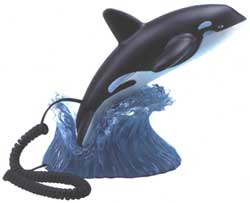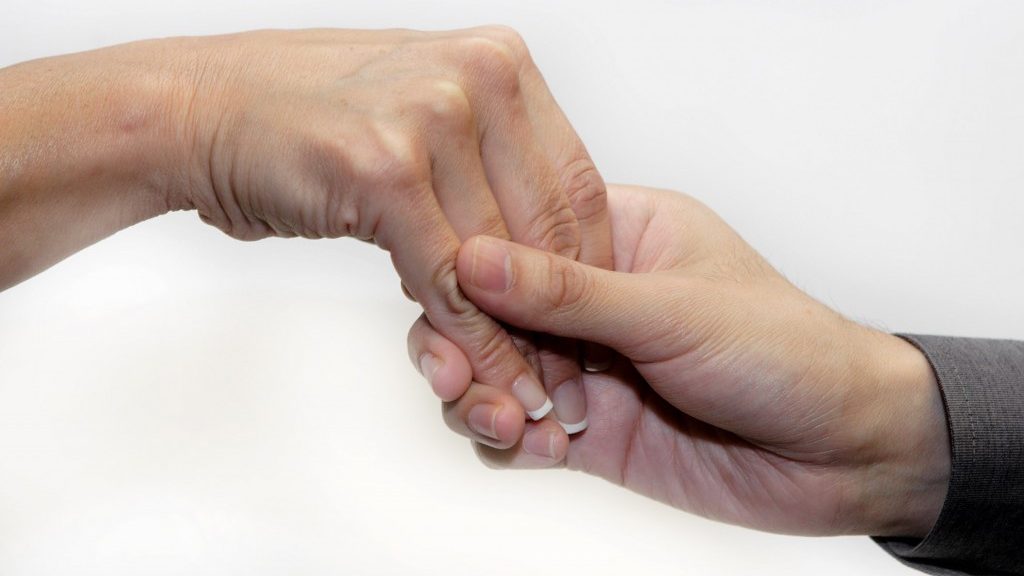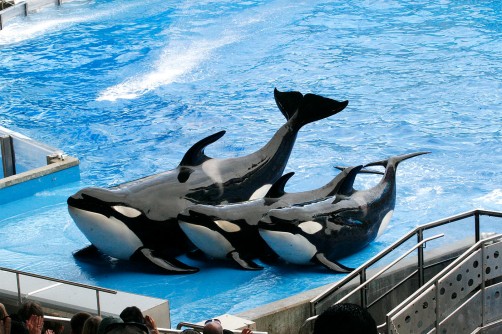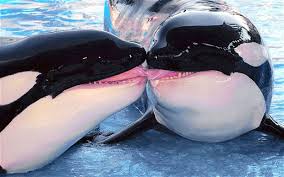by Brittney D. Herz
Of all the recent web-introduced issues (the confederate flag, gay marriage, confederate war generals’ memorials, minimum wage, and of course, Cecil) I, for some reason, can’t wrap my head around the traumatic images of the marine life that have leaked from SeaWorld’s vault of shame. Or what I at least was led to believe was from their vault of shame.
Why does this seem to bother me more than a historic symbol that is now being turned into an icon a racist hate? Well, I can’t honestly say why. It just does. And more so now that I’ve done some digging and I am starting to believe that most of the allegations SeaWorld is facing are completely overdramatized and hurting an organization that actually does a lot of good.
To set the scene, when I first moved to Florida I was ten. I was smack dab in the middle of fifth grade and my mom threw a dart at a map and decided “yeah let’s move three thousand miles that way”. I had no friends, no family, and a new house that smelled strangely of musk all the time. There was no grass to run in. Only dry, dead, shards of what could have at one time been alive but were then just brown daggers waiting to stab your bare feet. Every day down there was 98 degrees and everyone around me was listening to 98 Degrees, so needless to say I was really uncomfortable in my new home.
“Windows error 136: You have exceeded the capacity of bedroom-eyed, spiky haired chuckleheads.”
To get me a little more comfortable with my new state of residence my mother decided to have a weekend of touring the theme parks. That’s what you do when you live in Florida according to everyone else anyway is go to the theme parks. Disney was okay; I had a panic attack during “It’s a Small World”. Universal was better. Then we went to SeaWorld. A new obsession of marine life formed after our visit there. The monstrous size of the whales, the way the polar bear’s fur moved underwater, the facial expressions of the seals, the ever-present smile on the beluga whales’ faces; everything about the park was amazing to me.
As I got older I clung on to the fascination with the sea, underwater life, and most of all marine mammals. I learned to scuba dive, became certified to do so, and even did one of those stupid adopt a dolphin things where they send you a stock photo of a playfully jumping dolphin and say “that’s YOUR dolphin!” Above my bed hung a poster of a nighttime scene with a woman who had long flowing white hair and was playfully letting dolphins jump from her hands. My phone, which sat by bedroom door, was a killer whale. No joke, like this one- you talked right into its crotch.

If you were lucky, the crotch talked back.
I was even bit by a dolphin in the wild and chased down by a pack of them while stranded on a flipped over Jet Ski but still, I never lost my awe and intrigue. This lifelong obsession all started from my trip to Sea World…
So that long convoluted story brings us to last year when I started seeing all the horrific things that SeaWorld was doing to our planet’s marine life.
Blackfish, the documentary put out by CNN in 2013, caused quite the stir of controversies for SeaWorld. And rightfully so…the crying whales, the heartfelt testimony of the former trainers, and the scenes of crying children at the terrible accidents of 2010, 2006, and 1991 were great fodder for outrage.
It is known, and they have admitted to this, that SeaWorld did capture killer whales from the wild in the 1970s. That is unsettling and is no longer practiced, which we can be thankful for. According to Blackfish, in 1983 a male was captured off the coast of Iceland who would be named Tilikum. He was stored as a young age in small holding tanks until he was transferred to Sealand in Canada. There, harsh training tactics were used and food was withheld from him as punishment. He also wasn’t able to socialize with some of the other killer whales because there were claims of him being “raked” by the females. It was stated that raking does not happen in the wild, only to those whales in captivity because they can’t swim away from each other when confronted with aggression. (The film did leave out that the raking became a problem once the females were pregnant.) Tilikum is the whale that ended up killing three people. Was his violence brought on by years of mistreatment? These questions just don’t have direct answers.
Blackfish also stresses that there is no evidence of killer whales killing humans out in the wild. I can’t imagine that the millions of times trainers have face to face interactions with captive killer whales can be compared to the few hundred times people have interactions from the safety of a ship in the open sea. I don’t think that argument is a fair one.
One thing about the movie Blackfish that bothered me was, even though I agree with some of their points, they fluffed the truth too much for me to take the story as completely credible. For instance when you are watching, they talk about taking the calf killer whales from their mothers. It seems that this happened twice. In the documentary they say that one was four years old but on screen you are watching a whale that’s maybe a few weeks old swim around. If you didn’t know any better you would think that’s the whale they are speaking of. The other whale that was separated was actually twelve years old, with a baby of her own. In the documentary it says that babies never leave their mother’s side in the wild. Well if that’s true we have a whole lot of incest going on in the open sea. Obviously the babies have to leave to go find partners and mate, that’s just common sense. It’s these kinds of lazy storytelling and misdirection for the purpose of making a strong point that don’t benefit a documentary overall.
There’s the flip side to the evil that is now being known as SeaWorld. First things first, I want to point out that SeaWorld is a theme park. It’s there to get money from you and me to show us animals and let us ride on rides and buy cotton candy for $10 a stick. But, even with that said, they do in fact rescue and rehabilitate animals. No one can deny them that fact. They are, in no way whatsoever, mandated to do so. They are not a nonprofit, they are not a charity; they are a business. But, they still spend millions to rescue marine life and rehabilitate them. Even though SeaWorld is a for profit, they operate nonprofits like the SeaWorld Busch Gardens Conservation Fund. Many of these animals were also injured or had various other unfortunate incidents happen that ensured they would not survive in the wild on their own.
Completely unrelated orca tongue-kissing.
Besides all the hubbub, what really made me stop and think was the fact that SeaWorld, like every other park, zoo, and marine life enclosure of any kind, has to adhere to USDA regulations. I work at a library so I know enough about the rules and regulations of working for a government agency and I know that there is little to no wiggle room when it comes to getting out of your to do list. In addition to the government, plenty of other agencies check up on SeaWorld’s activity and their animals’ health but from what I have read/seen/heard no official agency of any kind has filed a complaint or suit against SeaWorld? It’s all videos and photos from bystanders.
It plays mp3’s, takes nude pics, and captures animal rights violations.
You may not recognize the name Keiko but you would recognize Free Willy. Keiko did not survive being in the wild for too long after his inspiring story. He was more adapted to the comfort of people and would be seen swimming close to shores, away from the packs of wild killer whales. What you don’t usually hear about is that SeaWorld helped to save that bull whale from his small Mexican tank which was too warm and putting him in horrid health. They funded the veterinarians who were able to set him free later.
So what about the beluga whales? What about the polar bears? Johnny, a 24-year old polar bear, just died last year at SeaWorld. In the wild it’s rare for polar bears to live anywhere past 25 years. Obviously he was well taken care of. If SeaWorld is really the monster that they are being made out to be why are none of the other animals being spoken for? Is it because there’s no emotional angle to target animals that haven’t killed innocent people? People who die doing something they love is always sad and tragic. Working with wild animals is dangerous. Driving to work is dangerous. Eating at a conference that has a funny guest speaker is dangerous. I really can’t completely blame the whale, the trainer, or SeaWorld for any of those tragic accidents. Nature doesn’t always go the way we intend it to, especially when we try to contain it in some way.
“Keep being cuddly forever LOL”
What it comes down to really is not whether you believe SeaWorld is evil, it’s whether or not you believe animals should be in captivity. What are the perks? Education, enrichment, being able to study these large wild animals in a way that may help them survive extinction? What are the cons? They basically live in nicely packaged jails. Just like all caged animals. Even though I’m leaning more on the side of defending SeaWorld I’m not saying that they are immune to protocol. I would think, now more than ever, they should be monitored and made sure to provide the best treatment for those whales(and all creatures) that they currently have. But I can’t help but also think that without the assistance of the research done by SeaWorld’s experts, our wild killer whales and our understanding of them would be finite and misguided.
It may not be a complete fabricated lie of a documentary on par with Loose Change, but it’s at least slightly biased, and at most sloppily researched.
Get more of Brittney at her education blog here and at her showcase for local artists and writers here.






Reblogged this on ending indifference about education and commented:
A little off the topic of education but had an article published today about my reaction to all the SeaWorld scandals. Some foul language, anti-boy band, and smart phone banter. You’ve been warned.
I have been to seaworld too and always wondered about the Blackfish documentary. I never saw any sign of mistreatment, and didn’t understand how they would be allowed to stay open if things were as bad as they presented. There was a part in Blackfish that went on about a man that fell into the killer whale tank and was killed. He broke into the park, and somehow fell into the tank and the film try to make it seem like it was SeaWorld fault…. Anyway I agree that SeaWorld and any zoo or park that involves living creatures need to be closely monitored and fined or closed if there is abuse or mis-use, but do not think the documentary is very credible.